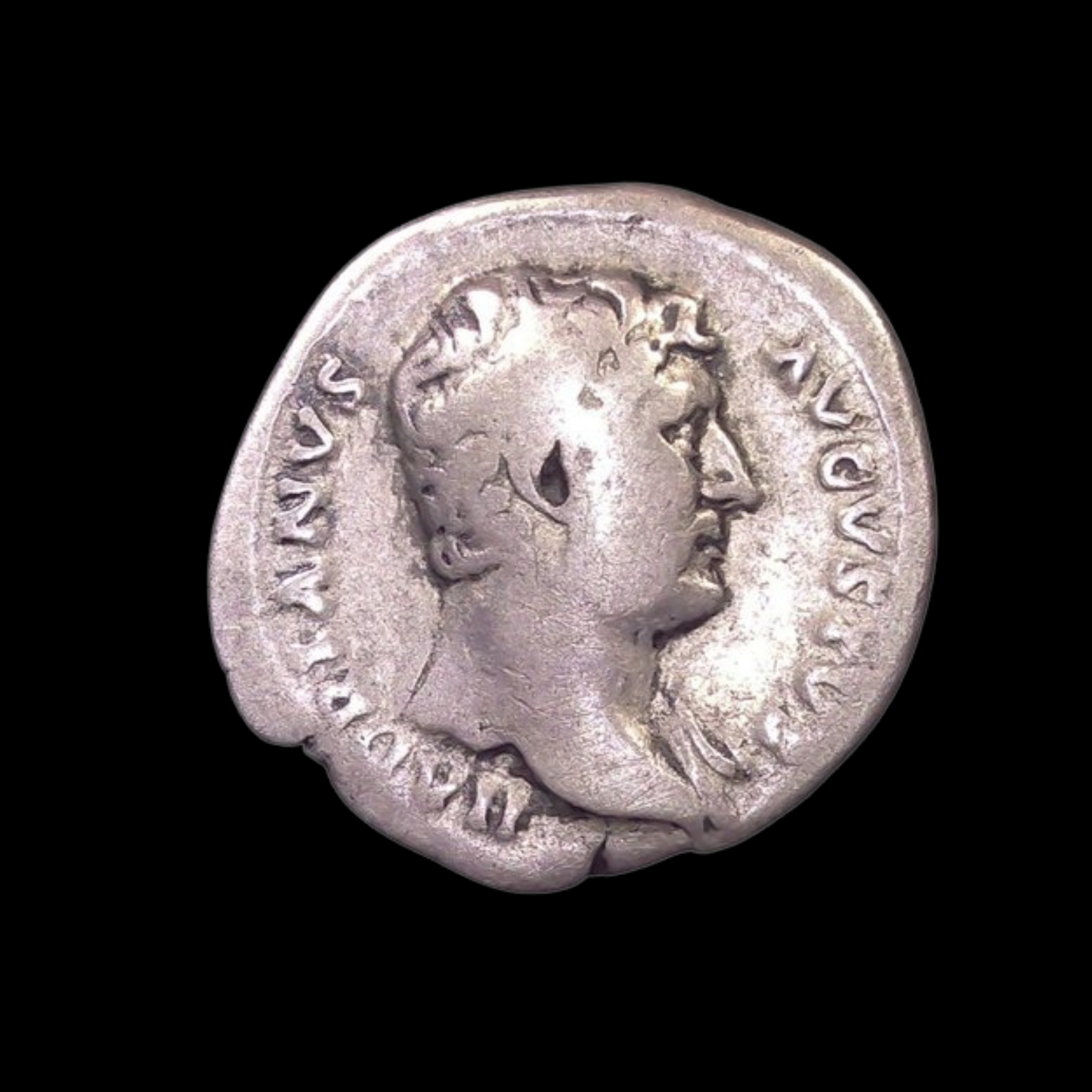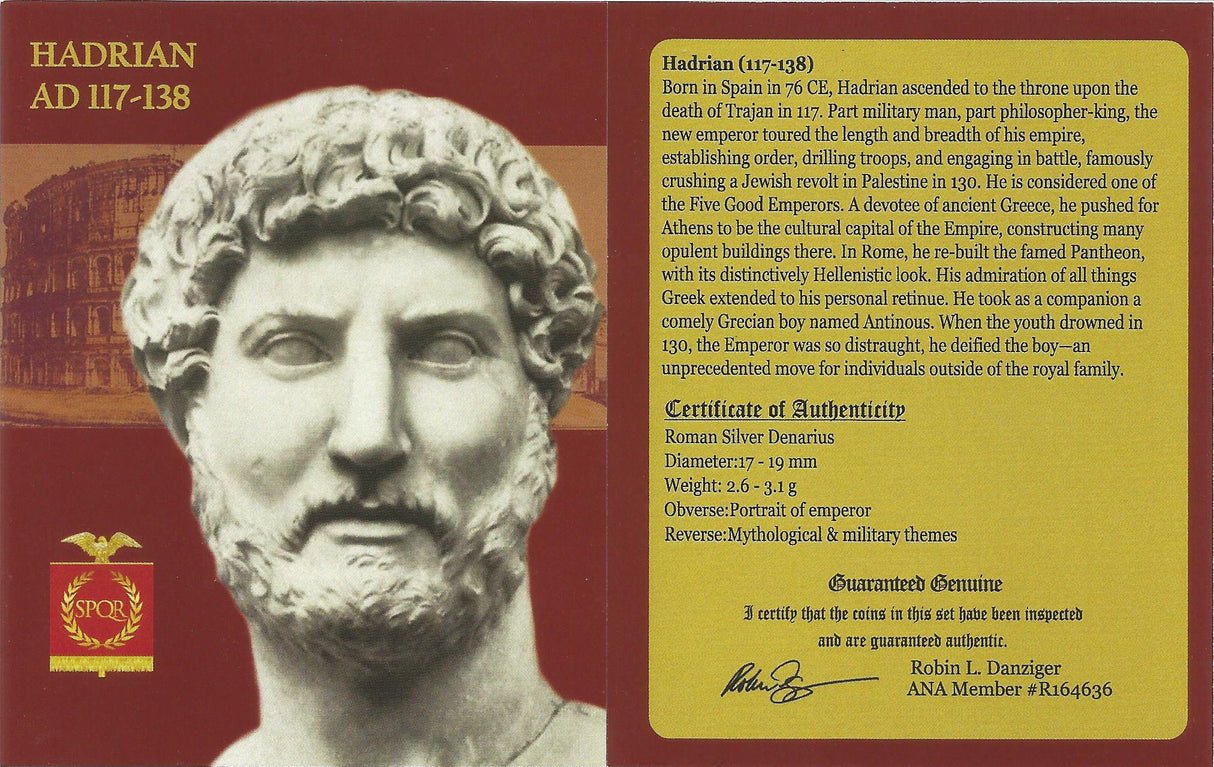 Image 1 of 6
Image 1 of 6

 Image 2 of 6
Image 2 of 6

 Image 3 of 6
Image 3 of 6

 Image 4 of 6
Image 4 of 6

 Image 5 of 6
Image 5 of 6

 Image 6 of 6
Image 6 of 6







Roman Bronze Coin of Empress Salonina (about 1,755-1,770 years ago)
This bronze coin portrays Empress Salonina, wife of Emperor Gallienus who ruled during the turbulent Crisis of the Third Century. As imperial consort during one of Rome's most challenging periods, Salonina witnessed the empire's near-collapse through civil wars, foreign invasions, and economic deterioration, while experiencing personal tragedy through the deaths of her sons amid the political turmoil.
Coin Description:
Front side: Portrait of Empress Salonina facing right, typically shown with a distinctive mid-3rd century hairstyle gathered at the back, with Latin inscription giving her name and titles
Back side: Likely depicts goddesses such as Venus, Juno, or personifications like Fecunditas (Fertility) or Concordia (Harmony), reflecting traditional Roman feminine virtues
Technical Details:
Bronze composition
Denomination: Likely an antoninianus or double-denarius, despite being struck in bronze with silver wash
NGC certified
Minted between 253-268 AD
Condition as certified by NGC
Historical Significance: Julia Cornelia Salonina's life intersected with one of the Roman Empire's most catastrophic periods. As wife to Emperor Gallienus and mother to three princes, she experienced both the privileges and perils of imperial power during unstable times. The unprecedented capture of her father-in-law Emperor Valerian by the Persians in 260 AD left her husband struggling to maintain control of a fragmenting empire. That same year brought personal tragedy when her son Saloninus was executed during the rebellion that created the breakaway Gallic Empire. Despite these challenges, numismatic evidence suggests Salonina may have wielded significant influence, with some coins emphasizing unusual themes like intellectual pursuits. Some scholars theorize she may have been sympathetic to Christianity based on the tolerant policies during her husband's reign, though definitive evidence remains elusive.
This bronze coin portrays Empress Salonina, wife of Emperor Gallienus who ruled during the turbulent Crisis of the Third Century. As imperial consort during one of Rome's most challenging periods, Salonina witnessed the empire's near-collapse through civil wars, foreign invasions, and economic deterioration, while experiencing personal tragedy through the deaths of her sons amid the political turmoil.
Coin Description:
Front side: Portrait of Empress Salonina facing right, typically shown with a distinctive mid-3rd century hairstyle gathered at the back, with Latin inscription giving her name and titles
Back side: Likely depicts goddesses such as Venus, Juno, or personifications like Fecunditas (Fertility) or Concordia (Harmony), reflecting traditional Roman feminine virtues
Technical Details:
Bronze composition
Denomination: Likely an antoninianus or double-denarius, despite being struck in bronze with silver wash
NGC certified
Minted between 253-268 AD
Condition as certified by NGC
Historical Significance: Julia Cornelia Salonina's life intersected with one of the Roman Empire's most catastrophic periods. As wife to Emperor Gallienus and mother to three princes, she experienced both the privileges and perils of imperial power during unstable times. The unprecedented capture of her father-in-law Emperor Valerian by the Persians in 260 AD left her husband struggling to maintain control of a fragmenting empire. That same year brought personal tragedy when her son Saloninus was executed during the rebellion that created the breakaway Gallic Empire. Despite these challenges, numismatic evidence suggests Salonina may have wielded significant influence, with some coins emphasizing unusual themes like intellectual pursuits. Some scholars theorize she may have been sympathetic to Christianity based on the tolerant policies during her husband's reign, though definitive evidence remains elusive.
This bronze coin portrays Empress Salonina, wife of Emperor Gallienus who ruled during the turbulent Crisis of the Third Century. As imperial consort during one of Rome's most challenging periods, Salonina witnessed the empire's near-collapse through civil wars, foreign invasions, and economic deterioration, while experiencing personal tragedy through the deaths of her sons amid the political turmoil.
Coin Description:
Front side: Portrait of Empress Salonina facing right, typically shown with a distinctive mid-3rd century hairstyle gathered at the back, with Latin inscription giving her name and titles
Back side: Likely depicts goddesses such as Venus, Juno, or personifications like Fecunditas (Fertility) or Concordia (Harmony), reflecting traditional Roman feminine virtues
Technical Details:
Bronze composition
Denomination: Likely an antoninianus or double-denarius, despite being struck in bronze with silver wash
NGC certified
Minted between 253-268 AD
Condition as certified by NGC
Historical Significance: Julia Cornelia Salonina's life intersected with one of the Roman Empire's most catastrophic periods. As wife to Emperor Gallienus and mother to three princes, she experienced both the privileges and perils of imperial power during unstable times. The unprecedented capture of her father-in-law Emperor Valerian by the Persians in 260 AD left her husband struggling to maintain control of a fragmenting empire. That same year brought personal tragedy when her son Saloninus was executed during the rebellion that created the breakaway Gallic Empire. Despite these challenges, numismatic evidence suggests Salonina may have wielded significant influence, with some coins emphasizing unusual themes like intellectual pursuits. Some scholars theorize she may have been sympathetic to Christianity based on the tolerant policies during her husband's reign, though definitive evidence remains elusive.



























